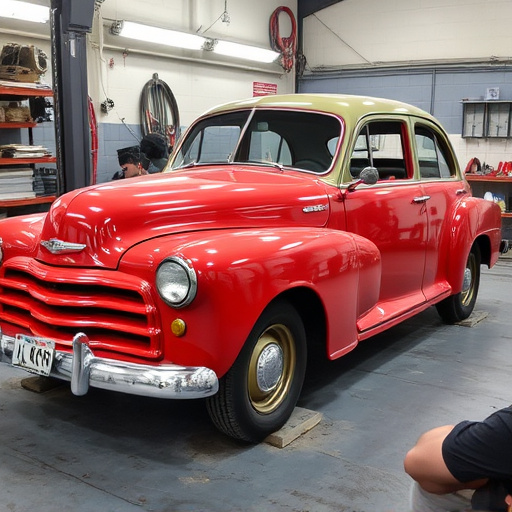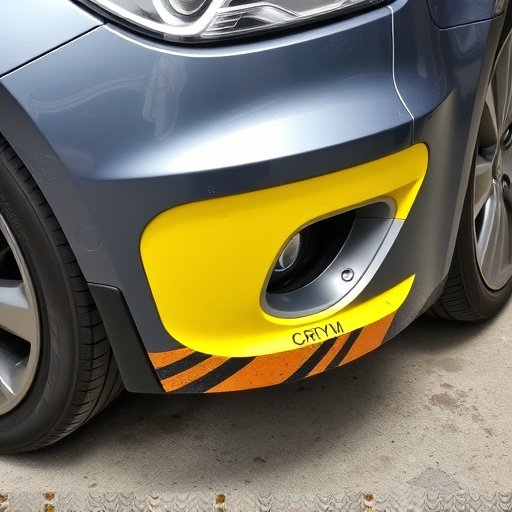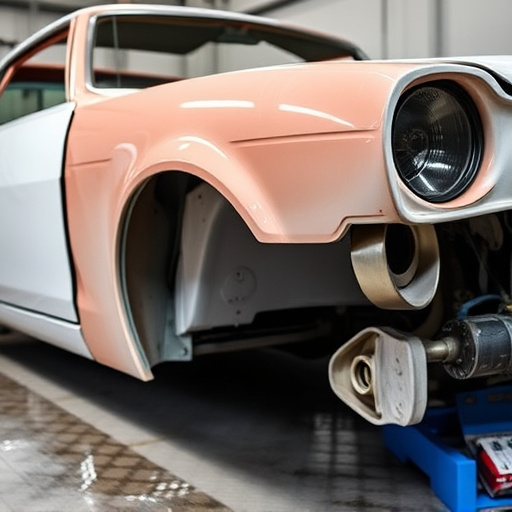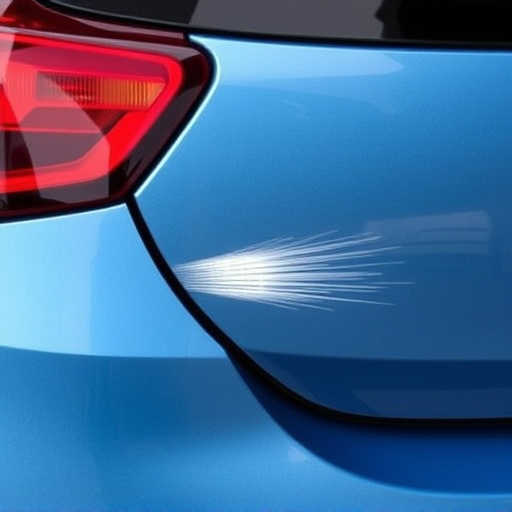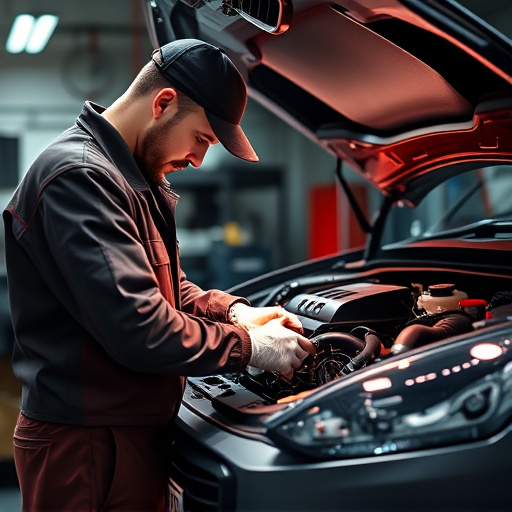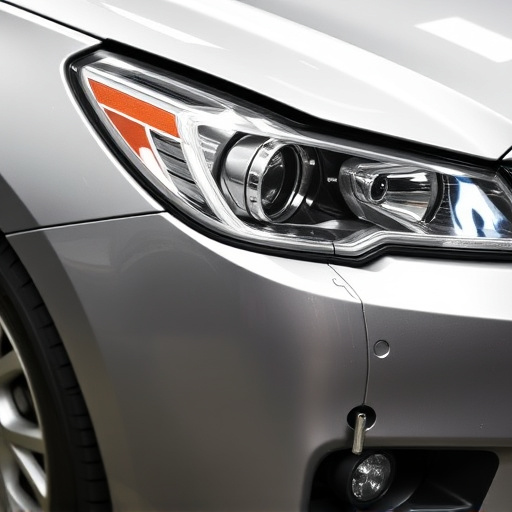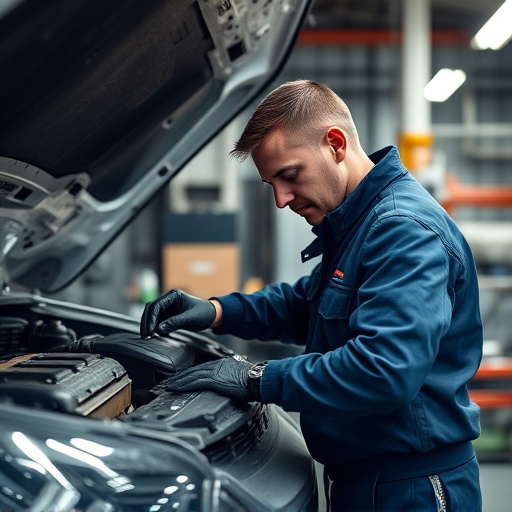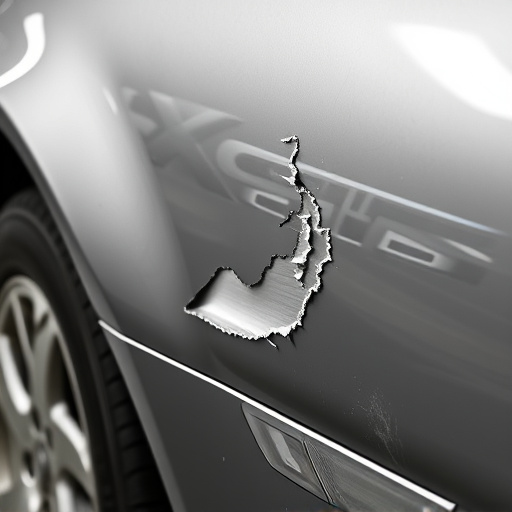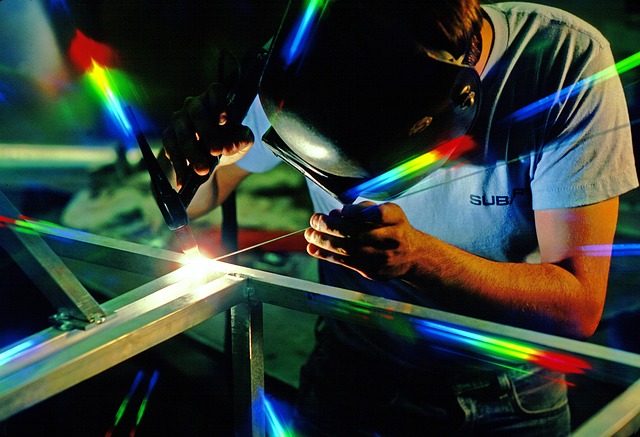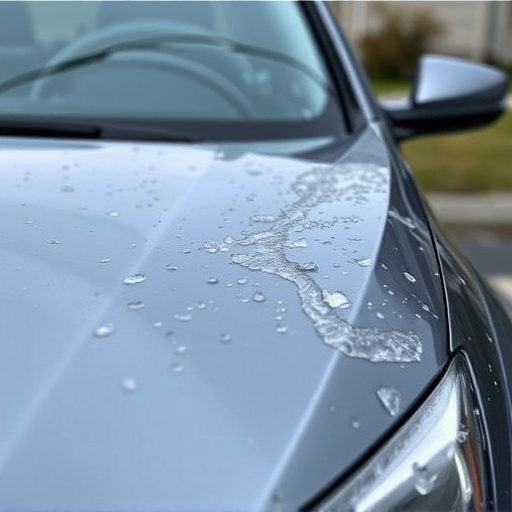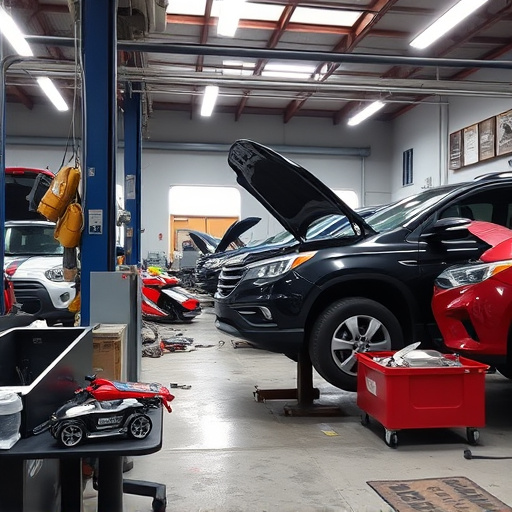After a collision involving a Tesla home charger, professional load testing is crucial for ensuring safety and reliable operation. This meticulous process simulates normal usage, verifying optimal performance and identifying internal damage or vulnerabilities like loose electrical connections, faulty fuses, or compromised relays. Specialized collision repair services cater to EV components, employing techniques such as paintless dent repair to restore aesthetics while minimizing disruption. The ultimate goal is seamless integration of the charger, allowing EV owners to safely continue using their at-home charging stations without further complications.
After a car accident, understanding the safety and functionality of your Tesla home charger is crucial. This guide explores what to expect and the critical role of professional load testing for Tesla home chargers. We delve into the advanced safety features designed to protect both you and your vehicle during charging, addressing common concerns following an accident. Learn how thorough load testing ensures your Tesla home charger operates safely, providing peace of mind for electric vehicle owners.
- Understanding Tesla Home Chargers and Their Safety Features
- What to Expect After an Accident Involving a Tesla Home Charger
- The Role of Professional Load Testing in Ensuring Safe Operation
Understanding Tesla Home Chargers and Their Safety Features
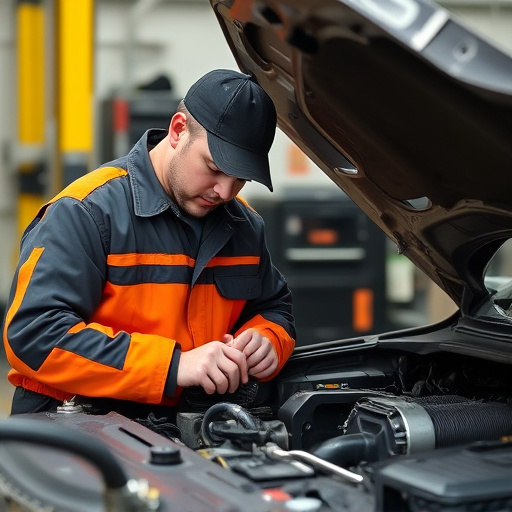
Tesla home chargers are designed with safety as a top priority. They feature advanced protection mechanisms to prevent electrical hazards and ensure a secure charging experience for Tesla owners. These chargers employ ground fault circuit interrupters (GFCIs) to detect and disrupt any abnormal electric current, protecting against potential shocks. Additionally, they incorporate overcurrent protection devices that can automatically shut off power if the charger detects excessive electricity flowing through it, safeguarding both your vehicle and home wiring from damage during a Tesla home charger after accident.
Regular load testing is crucial in maintaining the integrity of these safety features. Professional auto repair services specializing in electric vehicle (EV) repairs offer comprehensive testing to simulate various charging scenarios. This includes evaluating the charger’s performance under different voltage levels, current demands, and potential stress factors such as high-temperature conditions. By undergoing this rigorous testing, owners can rest assured that their Tesla home chargers are functioning optimally and safely, minimizing risks associated with vehicle collision repair and ensuring a reliable charging experience for years to come.
What to Expect After an Accident Involving a Tesla Home Charger
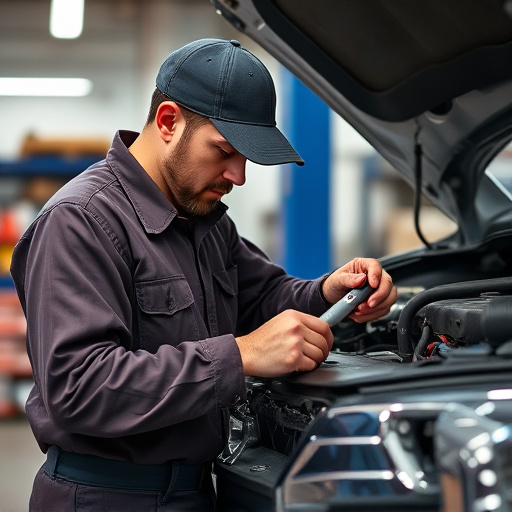
After a collision involving a Tesla home charger, several key considerations come into play. Initially, it’s crucial to assess the extent of the damage both to the vehicle and the charging hardware. Tesla home chargers are designed with safety in mind, but accidents can still cause issues ranging from minor electrical problems to significant structural damage. Professional load testing becomes essential to ensure that, once repaired or replaced, the charger functions correctly and safely.
Collision repair services often include specialized auto body services tailored for electric vehicle (EV) components like Tesla home chargers. Techniques such as paintless dent repair can be employed to restore the charger’s aesthetic appeal while minimizing overall disruption. The goal is to have the charger functioning seamlessly once again, allowing EV owners to continue enjoying the convenience and benefits of their at-home charging stations without further complications or safety risks.
The Role of Professional Load Testing in Ensuring Safe Operation
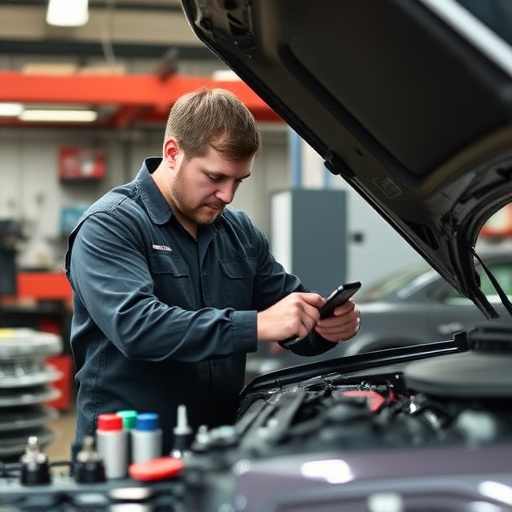
After an accident, a Tesla home charger may sustain damage just like any other component of a vehicle. Professional load testing plays a pivotal role in ensuring its safe operation and reliability post-repair. This meticulous process involves subjecting the charger to simulated conditions that mimic the demands it faces during normal usage. By applying controlled stress and checking for performance, a collision center or body shop service can verify that all systems function optimally and safely.
Load testing is not just about identifying visible damage; it also uncovers internal vulnerabilities. It ensures that electrical connections are secure, wires are intact, and components like fuses and relays operate as intended under pressure. This comprehensive evaluation is crucial in a Tesla home charger, given its integration into the vehicle’s electric system. A professional approach to load testing guarantees not just structural integrity but also the continuous, efficient charging performance expected from a Tesla after accident repairs or bodywork services.
After an accident involving a Tesla home charger, proper evaluation and testing are crucial to ensure safe operation and peace of mind. Professional load testing plays a vital role in identifying any potential issues and validating the integrity of the charger’s safety features. By understanding what to expect post-accident and the importance of thorough testing, owners can confidently navigate this process, ensuring their Tesla home charger remains a reliable and secure part of their electric vehicle ownership experience.
